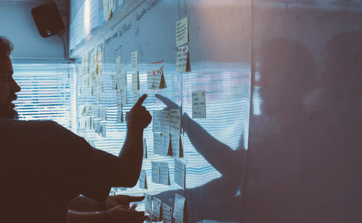 How much time does it take to create a poverty reduction strategy? There is no good answer to this question. However, one of the most common drawbacks we hear from Cities Reducing Poverty members is the unexpected amount of time it takes to create and launch a strategy.
How much time does it take to create a poverty reduction strategy? There is no good answer to this question. However, one of the most common drawbacks we hear from Cities Reducing Poverty members is the unexpected amount of time it takes to create and launch a strategy.
We spoke with five communities who had recently gone through the process of developing a community-wide poverty reduction strategy. We compiled and compared their work plans against the actual time it took – from the moment they agreed to undertake a strategy using a community-wide approach to its public launch – and reflected together on why it was important for them to make the extra time where they did.
Here are a few of the commonly recurring surprise time-takers:
- Establishing a shared vision – Getting the Roundtable and/or Leadership Team on the same page with the overall goal and approach.
- Momentum – The unexpected level of excitement in the community and snowballing engagements.
- Targeted community engagement – Particularly engaging people with lived/living experience and marginalized communities.
- Common Language – Use of language internally as well as publicly (ex. working definitions, strategy drafts, invitation letters).
- Compiling, writing and editing the strategy report – Styling, formatting, gaining validation from partners and incorporating revisions.
Some accelerators of time were also noted:
- Already having the right people at the table;
- Previously completed research; and
- Federal/provincial initiatives (especially the opportunity to contribute to poverty reduction strategy consultations).
The new tool, Poverty Reduction Strategy Timelines, is a compilation of timelines providing a point-of-reference for multi-sectoral poverty reduction initiatives who are planning to develop their own strategies, sharing commonly reported un- or under-anticipated pockets of extra time.
While each community is different with a different journey and will encounter its own unexpected twists and turns, the goal is to provide organizers with insights and examples from across Canada to assist in setting plans and expectations.
Once you have explored the planned and actual timeframes as well as the areas of unexpected time, reflect on how you can use these lessons when creating your own team’s work plan. Where can you build in extra time or anticipate needing to be flexible with dates?
Are there sections of work that you could use extra resources or advice from Tamarack or Cities Reducing Poverty members help you advance through the trickier areas of the work?
Learn More:
- Download: TOOL | Poverty Reduction Strategy Timelines
- Go further by exploring the contributing poverty reduction collaboratives and their strategies:





